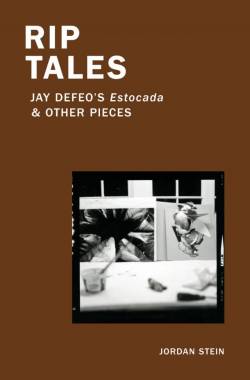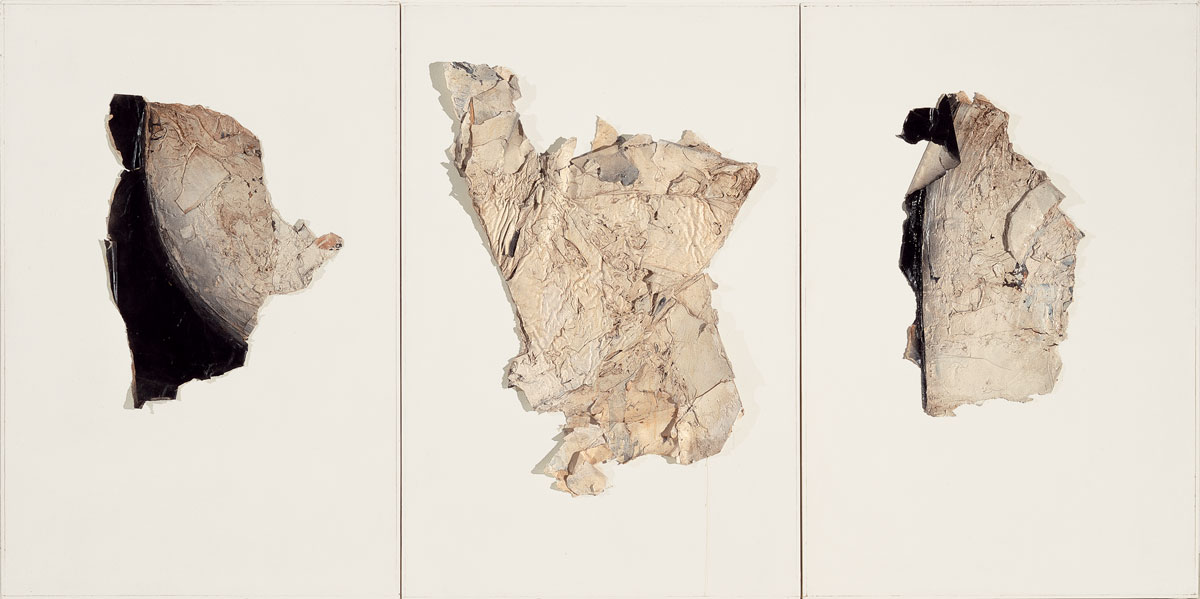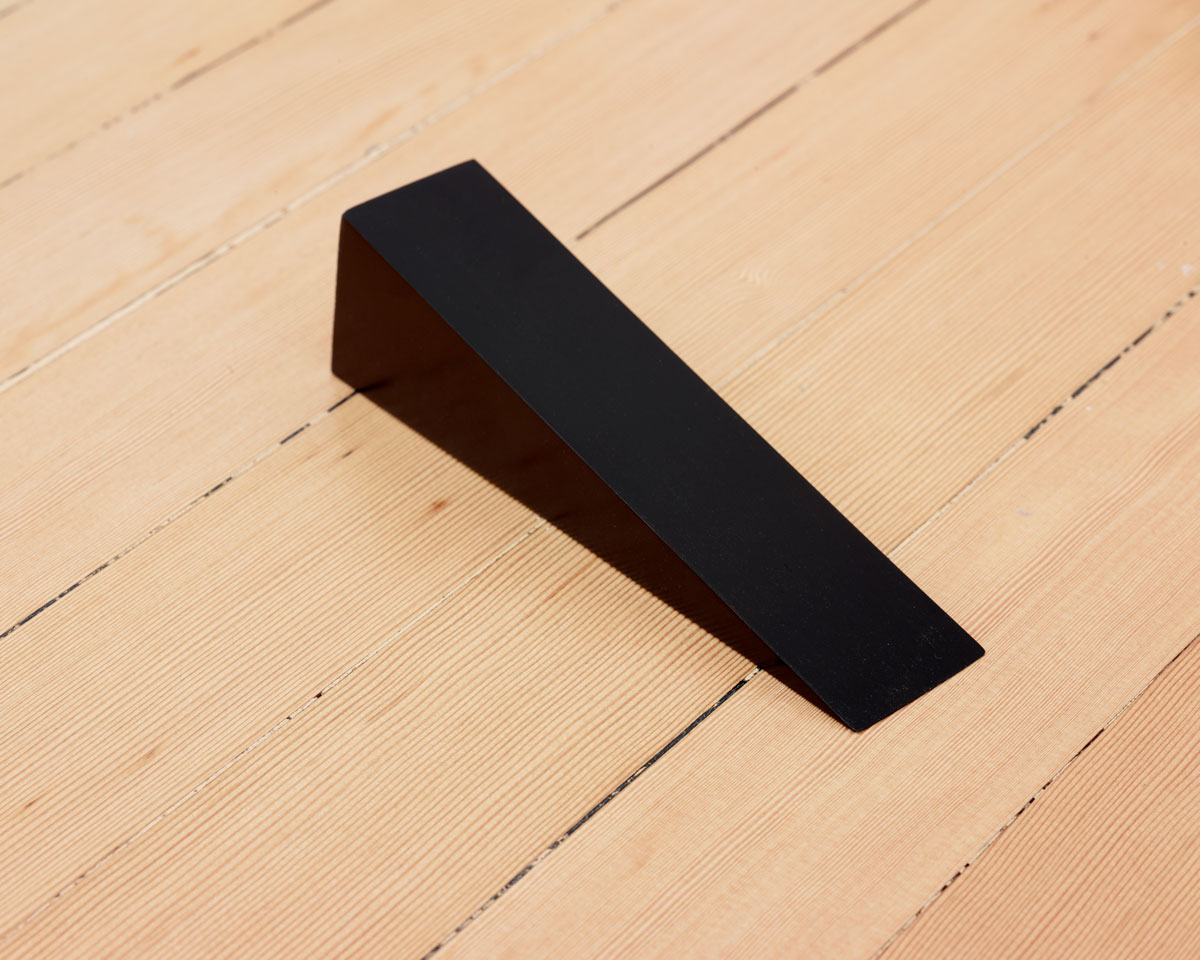The story of Jay DeFeo is often simply the story of her most famous work, The Rose. Made over a span of eight years, the monumental three-dimensional painting spent twice that time concealed behind a wall at the San Francisco Art Institute before it was rescued and restored by the Whitney Museum, where it now lives. The narrative arc of monomaniacal labor, the painting’s dramatic 1965 removal through a hole cut in the front of DeFeo’s Fillmore Street apartment and then, years after the artist’s death, a triumphant rediscovery, is very seductive. And there is no ignoring The Rose, neither its role in DeFeo’s personal history nor its physical presence. It is one of the greatest paintings I have ever seen.

But Rip Tales: Jay DeFeo’s Estocada & Other Pieces, a new book of essays and interviews by San Francisco curator Jordan Stein (organizer of Cushion Works), points out that The Rose was not DeFeo’s sole occupation during those eight years. She also painted on paper in her hallway—a “shadow Rose” called Estocada—in the six months leading up to her eviction. To think that DeFeo worked on nothing but The Rose is, according to Stein, “a mirage, reflecting history’s hunger for the monolithic and mythological.”
Resisting this, Stein’s own book refuses to be either monolithic or mythological. Between each chapter detailing the larger span of DeFeo’s life and work are stories of other hard-to-pin-down artists and their Bay Area ties: Trisha Donnelly, Ruth Asawa, Dewey Crumpler, April Dawn Alison, Lutz Bacher, Zarouhie Abdalian, Vincent Fecteau and Bruce Conner. These fragmentary glimpses into other artists’ approaches complement and bolster Stein’s detailed and often rollicking narrative of DeFeo’s art. She becomes not an aimless “lady in search of an encore” post-Rose (as one local newspaper depicted her), but a member of an iterative, vibrant and decades-long tradition of Bay Area art-making.
The structural through line of Rip Tales is the gradual morphing of Estocada (named for the final thrust of the matador’s sword through a bull’s neck). The large-scale painting on paper was taken from DeFeo’s apartment in pieces, ripped from the wall in “fleshy chunks.” (Stein’s language is surprising and fresh, casting even the very familiar in a new light. He describes The Rose as “a total piece of architecture resembling a distant nebula surrounded by dinosaur teeth or horse hooves.”)

Estocada followed DeFeo to a one-room cottage in Ross and a barn “studio” semi-open to the elements. It followed her to Larkspur, living under her bed, “rogue and untethered” until it began to appear in photographs, first in a color image from 1971, then in a series of gelatin silver prints from 1973. A trio of large Estocada fragments, rescued from the trash and mounted to masonite, achieved some stasis in Tuxedo Junction (1965/1974). Meanwhile, DeFeo’s photographs continued to morph—into collage materials, photocopies and even more photos. One way the story of Estocada ends, Stein says, is in an imageless photograph, a collaged, irregular shape of exposed photographic paper.
We get much more of DeFeo than we do of the other artists in Rip Tales, but those glimpses into their practices inform an approach to thinking about art that becomes, in some ways, uniquely “Bay Area” (a.k.a. resolutely noncommercial). Stein is a warm presence in each of these digressions; in the chapter on Trisha Donnelly he describes witnessing the artist give an enigmatic lecture at SFAI and signing up for as much coursework with her as possible. She made it clear, Stein writes, that “we would be wise to develop an immunity to the explanatory, such as wall texts or press releases, not to mention objects of consensus, like reputations or desirability.”

Rip Tales is a refreshing, necessary reminder that art can be “always on its way,” unclear and uncategorizable even to its maker. It can be the result of many hands (like Ruth Asawa’s 1970–73 San Francisco Fountain in Union Square); many years (like April Dawn Alison’s incredible 1975–2008 self-portraiture project); repeated gestures (like Zarhouhie Abdalian’s cadre of wedges in Simple Machines); or an idea, spoken aloud but never realized (like Vincent Fecteau’s public art fantasy of a building halted mid-construction).
The book ends with the story of an artwork that is, somehow, all of the above: a painting made by Bruce Conner but attributed to “Anonymous,” gifted to friends and meant to hang on a fence in a nod to DeFeo’s old barn studio. A mirror of Estocada, which was in turn a shadow Rose, HOMAGE TO JAY DEFEO (1991) shows one artist’s practice affecting another’s—a lineage Rip Tales now joins as a further morphing of an idea once stapled to a Fillmore Street hallway.
As Stein writes, “For DeFeo, the integrity of the ‘original’ was perpetually plural—sculptural but not sculpture, painted but not painting, drawn but not drawing. And, of course, unfinished.”

‘Rip Tales: Jay DeFeo’s Estocada & Other Pieces’ is out from Soberscove Press on Dec. 7, 2021. A book release, screening and signing will take place at the San Francisco Art Institute (Osher Lecture Hall, 800 Chestnut St.) at 6:30pm on Dec. 8. Details here.